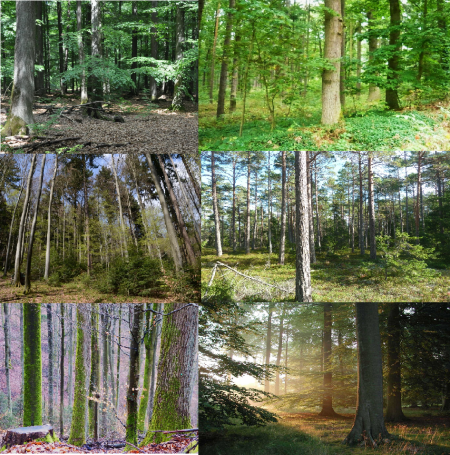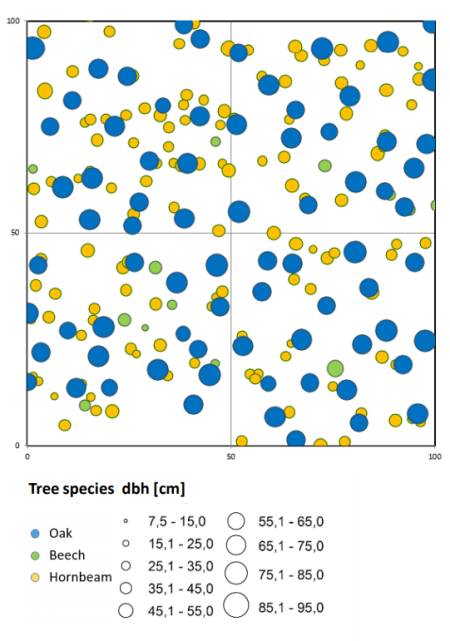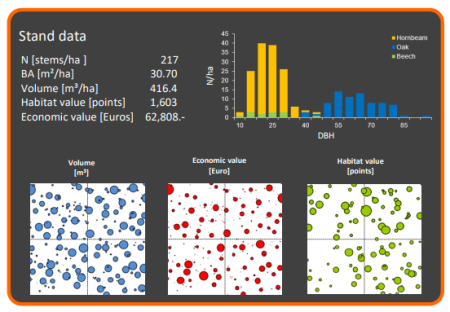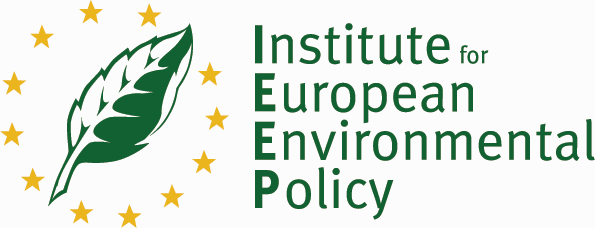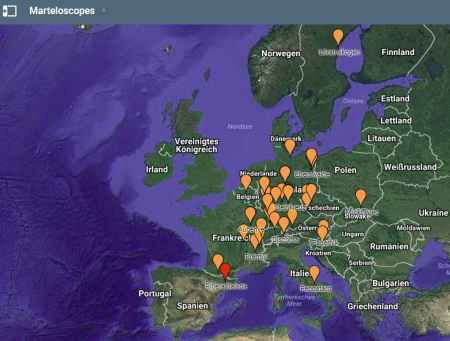
Area characterisation:
Marteloscopes were established in dominant forest communities of Europe. Due to their demonstration character the selection of sites was non-systematic based on either availability or particular silviculture aims in the area. They are mainly located in forests in public ownership with a few also in private forests covering a broad range of forest types (e.g. beech-oak, oak-hornbeam, pine-spruce, etc.), altitudinal gradient (from 25 m – 1850 m) and site conditions (e.g. oligotrophic Luzulo-Fagetum, Vaccinio-Pinetum). Countries having established Marteloscopes are Belgium, Czech Republic, France, Germany, Italy, Poland, Slovenia, Sweden and Switzerland. Their number may differ from 1 in Sweden to more than 10 in Germany.
Objective:
The aim is to establish a network of demonstration sites covering a broad range of European forest types in which integrative forest management measures are being practiced. Having such sites will help train and eventually improve decision making capacities related to integrating biodiversity aspects into managed forests.
Images
Potential impacts/benefits:
The identification of key habitat elements and structures is a crucial pre-requisite for the integration of biodiversity conservation aspects into commercial forest management. Forest managers are often not trained to identify these elements and structures supporting species diversity. They may simply lack the abilities for recognition and assessment of key habitat structures or may not know how to consider them in forestry operations and planning procedures. Scientific findings are increasingly being applied in practical approaches when it comes to integrating conservation measures to forest management. Especially these cases are valuable, good practice examples to be shared. The demonstration sites include selected points for field visits and excursions for a wider audience, as well as permanent plots based on the French ‘Marteloscope’ approach. Marteloscopes are 1-hectare forest plots in which tree measurements and innovative software for hand held devices are linked to provide a framework for in-forest training. That includes for example the marking and selection of trees and identification of habitat structures. Results of the exercise can then be instantly visualised on a tablet computer or laptop in the stand and thus serve as input for stimulating discussions in the field. So far 40 such sites have been established and are being used for training and education.
Transferability of result:
The basic idea of Integrate+ is to motivate the establishment of demonstration sites in order to use them in the longer term for education and training purposes. Such activities are already taking place in a number of locations. Marteloscopes can also be used for research as all trees in are mapped, marked and measured. (Kraus et al., 2017).
Lessons learnt:
The demonstration sites encouraged regional/national and transnational exchange of knowledge. IT tools allowed to perform virtual tree selection exercises in the field giving immediate feedback on decisions in terms of impacts on habitat quality and economic implications (Schuck et al., 2016).
Organisations:
Andreas Schuck (andreas.schuck@efi.int), European Forest Institute
Contacts:
Andreas Schuck (andreas.schuck@efi.itl), European Forest Institute
Publications and reports:
Kraus D., Schuck A., Bebi P., Blaschke M., Bütler R., Flade M., Heintz W., Krumm F., Lachat T., Larrieu L., Lehnerova L., Levin M., Mergner U., Pach M., Paillet Y., Pyttel P., Rydkvist T., Santopuoli G., Sever K., Sturm K., Vandekerkhove K., Winter S., Witz, M., 2017. Spatially explicit database of tree related microhabitats (TreMs). Version 1.2. Integrate+ project. Version 1.6. Institut National de la Recherche Agronomique (INRA). Occurrence Dataset https://doi.org/10.15468/ocof3v accessed via GBIF.org on 2017-07-31. https://www.gbif.org/dataset/2e102194-f384-4712-89a4-5db7a3fc409a
Kraus, D., Bütler, R., Krumm, F., Lachat, T., Larrieu, L., Mergner, U., Paillet, Y., Rydkvist, T., Schuck, A., and Winter, S., 2016. Catalogue of tree microhabitats – Reference field list (English edition). Integrate+ Technical Paper 13. 16 p. http://www.integrateplus.org/uploads/images/Mediacenter/Catalogue_Tree-Microhabitats_Reference-Field-List_EN.pdf
Schuck, A., Held, A., Kraus, D., Krumm, F., Quadt, V., Schmitt, H., Vitkova, L., 2016. Integrate+ training, excursions and exchanges – summary sheets. Integrate+ Technical Paper No. 19. 121 p. http://www.integrateplus.org/uploads/images/Mediacenter/I_PLUS_Activity_Fact-Sheet.pdf
Schuck, A., Kraus, D., Krumm, F., Held, A., Schmitt, H., 2015. Integrate+ Marteloscopes – Calibrating silvicultural decision making. Integrate+ Technical Paper No. 1. 12 p.
Integrate+ website. Demonstration site network. http://www.integrateplus.org/Demo-Sites/What-is-a-Marteloscope/table.html (accessed 19.10.2017)
Integrate+ website. Demsontration site guides and project reports. http://www.integrateplus.org/media-center.html. Accessed 19.10.2017

